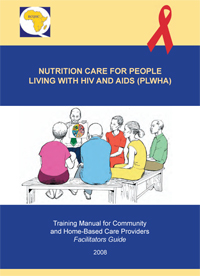
Foods rich in nutrition are essential for older people. These meals must be free from processed junk food and should only include fresh, minimally-processed foods. They should also be more active, particularly if they are not. Exercise is now part of the national food guide system. Here are some suggestions on how to increase the number of daily physical activities. All these tips and tricks will make it easier for older adults to eat healthy, balanced meals.
Your body's health is dependent on your diet, which should include low-calorie foods that are high in nutrients. These foods have fewer calories and are lower in calories than their higher-calorie counterparts. These foods also have vitamins, minerals and lean protein. These food groups are excellent for the heart because they are high in fiber. If you are a vegetarian, however, you may not be able to consume all these foods.

A great way to identify nutritious foods is with dietitian-approved thumbs. These simple labels let you know if the product is nutritionally dense. A common feature of these tags is an acronym that identifies its source. A label like the Dietitian Aproved Thumbs makes shopping easier by allowing shoppers to quickly identify healthy options. You can also find information about the nutrients in the product.
Superfoods are food items that excel at achieving specific nutritional goals. Superfoods don't need to be regulated. However, they are high in antioxidants as well as powerful healing properties. Turmeric, for example, has anti-inflammatory properties which may help to combat certain illnesses. Superfoods also contain omega-3 fatty acid, which has been shown to lower cholesterol and improve lipid metabolism. This article also covers micronutrients.
These supplemental foods are not particularly dense in nutrients, but they can provide energy and non-essential nutrients. These foods can be used to supplement the diverse array of complementary diets available in South and Southeast Asia. They are high in fiber and low in fat. They are also extremely nutrient dense, which is essential for optimal health. A diet rich in fiber is essential for promoting good digestion. In addition to these, it is best to eat a wide variety of vegetables and fruits.

Vegetables can be substituted for animal protein by being rich in vitamins, minerals, and nutrients. They are high in nutrition and have low calories. Additionally, they provide a wide range essential vitamins as well as minerals. They aid in the body's immune system as well as basic cell metabolism. Vegetables have a lot more fiber than meat. Many vegetables even contain substantial amounts of protein. You can eat vegetables if you don't want to eat dairy or meat.
These ASFs are extremely rich in nutrients. They are an excellent way to increase your intake of these foods. They are also easy to add to your diet. They are also rich in antioxidants which help fight diseases. The food pyramid could be the perfect way to increase your intake superfoods. This is a good place for you to start if you want to nourish your body.
FAQ
Does being cold give you a weak immune system?
It's been said that there are two kinds of people in the world; those who love winter and those who hate it. It doesn't matter if you love it or not, it is possible to wonder why it makes you feel so miserable when it gets cold outside.
The answer lies in the fact that our bodies are designed to function best during warm weather. We evolved to thrive in hot environments because of the abundance of food resources.
We live in a very different environment than our ancestors. We spend a lot more time indoors, and are often exposed at extreme temperatures (cold and hot), and we eat processed foods over fresh.
Because of this, our bodies have become accustomed to extremes. When we do venture out, our bodies are unable to cope with the extremes.
However, there are some ways to reduce these effects. The best way to avoid these problems is to ensure that your body stays hydrated throughout the day. You can help flush toxins out of your body by drinking plenty of water.
It is important to eat healthy foods. Healthy food will help your body maintain its optimal temperature. This is especially helpful for people who spend a lot of time indoors.
Finally, consider taking a few minutes each morning to meditate. Meditation helps to calm your mind and body which can make it easier to deal stress and illness.
How do you measure body fat?
A Body Fat Analyzer can be used to measure body fat. These devices can be used to measure body fat percentages in people who are trying to lose weight.
These are 5 ways you can live a healthy and happy life.
Healthy lifestyles include eating right, exercise regularly, getting enough rest, managing stress, having fun, and eating healthy. Avoiding sugar and processed foods is key to eating well. Exercise is good for your body and muscles. You can improve your memory and concentration by getting enough sleep. Managing stress reduces anxiety and depression. Fun is key to staying young and vibrant.
What are the best 10 foods to eat?
The 10 best foods to eat include:
-
Avocados
-
Berries
-
Broccoli
-
Cauliflower
-
Eggs
-
Fish
-
Grains
-
Nuts
-
Oats
-
Salmon
How much should I weigh for my height and age? BMI calculator & chart
A body mass index calculator (BMI) is the best way to find out how much weight you should lose. A healthy BMI range is between 18.5 and 24.9. If you want to lose weight, then you should aim to drop about 10 pounds per month. To calculate your BMI, simply enter your height and weight into the BMI calculator.
This BMI chart will help you determine if your body is overweight or obese.
What's the difference between a virus & a bacterium?
A virus is an organism microscopic that can't reproduce outside its host cells. A bacterium is an organism that splits itself in two. Viruses measure only 20 nanometers in diameter, but bacteria is up to 1 millimeter in size.
Viruses are spread via contact with infected bodily liquids such as urine, saliva, semen and vaginal secretions. Bacteria are often spread via direct contact with contaminated surfaces or objects.
Viruses may enter the body through cuts, scrapes. bites, or any other break in the skin. They can also enter the body through the mouth, nose, eyes and ears, vaginal, rectum or anus.
Bacteria can enter our bodies through wounds, cuts, scrapes, burns, insect stings, or other breaks in our skin. They may also come into our bodies through food, water, air, soil, dust, or animals.
Both bacteria and viruses cause illness. Viruses can not multiply within the host. They can only infect living cells and cause illness.
Bacteria may spread to other people and cause sickness. They can also invade other parts of your body. To kill them, we must use antibiotics.
How can I get enough vitamins
You can get most of the daily nutrients you need through your diet. Supplements are an option if you are low in any vitamin. A multivitamin supplement can provide all the vitamins you require. You can also buy individual vitamins at your local pharmacy.
Talk to your doctor if there are any concerns about getting enough nutrients. You can find vitamins K and E in dark green leafy vegetable such as spinach, kale and turnip leaves, as well a variety of sweet potatoes and sweet potatoes.
Ask your doctor for advice if you are unsure how much vitamin to take. He or she will recommend the appropriate dosage based on your medical history and current health status.
Statistics
- WHO recommends reducing saturated fats to less than 10% of total energy intake; reducing trans-fats to less than 1% of total energy intake; and replacing both saturated fats and trans-fats to unsaturated fats. (who.int)
- This article received 11 testimonials and 86% of readers who voted found it helpful, earning it our reader-approved status. (wikihow.com)
- According to the Physical Activity Guidelines for Americans, we should strive for at least 150 minutes of moderate intensity activity each week (54Trusted Source Smoking, harmful use of drugs, and alcohol abuse can all seriously negatively affect your health. (healthline.com)
- In both adults and children, the intake of free sugars should be reduced to less than 10% of total energy intake. (who.int)
External Links
How To
27 Steps to achieve a healthy lifestyle when your family only buys junk food
The most common way to eat healthy is to cook at home. But, it can be hard to make healthy meals because many people don't know how. This article will provide some helpful tips for making healthier dining out choices.
-
Look for restaurants that offer healthy choices.
-
Order salads and vegetables before ordering any meat dishes.
-
Ask for sauces without added sugar.
-
Avoid fried foods.
-
Grilled meats are better than fried.
-
Order dessert only if you absolutely need it.
-
It is important to have something more after dinner.
-
Take your time and chew slowly.
-
Get plenty of water when you eat.
-
You should not skip breakfast or lunch.
-
Take fruit and vegetables along with every meal.
-
Consider drinking milk instead of soda.
-
Sugary drinks are best avoided.
-
Reduce salt intake.
-
You should limit how often you visit fast food restaurants.
-
Ask someone to come along if you are unable to resist temptation.
-
You should not allow your kids to watch too many TV programs.
-
Turn off the television during meals.
-
Do not drink energy drinks.
-
Take frequent breaks from your job.
-
Get up early and go for a run.
-
Exercise everyday.
-
Start small, and work your way up.
-
Set realistic goals.
-
Be patient.
-
Even if you don’t feel like exercising, make time for it.
-
Use positive thinking.